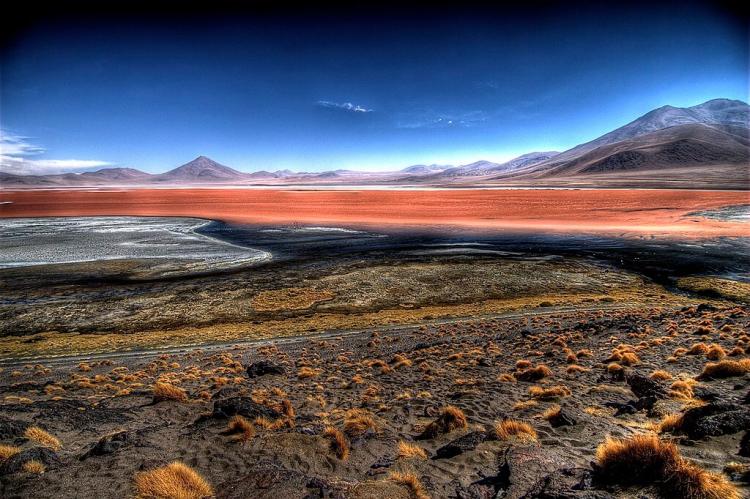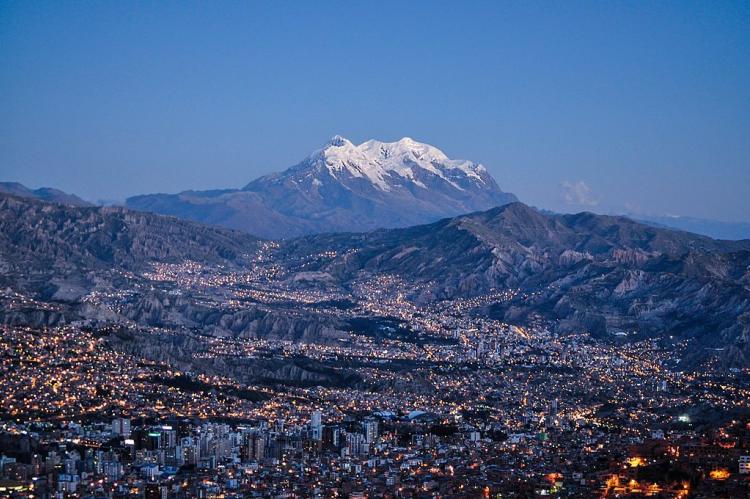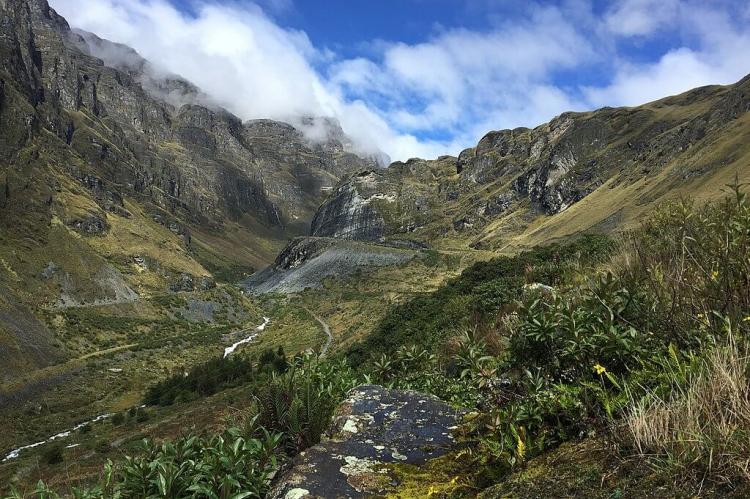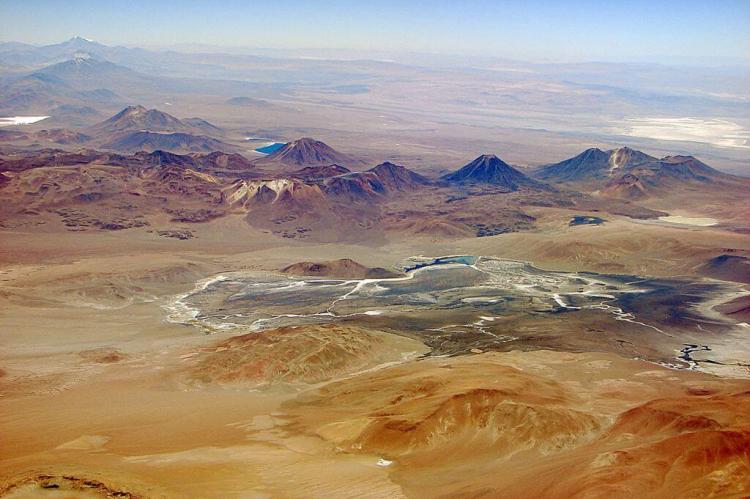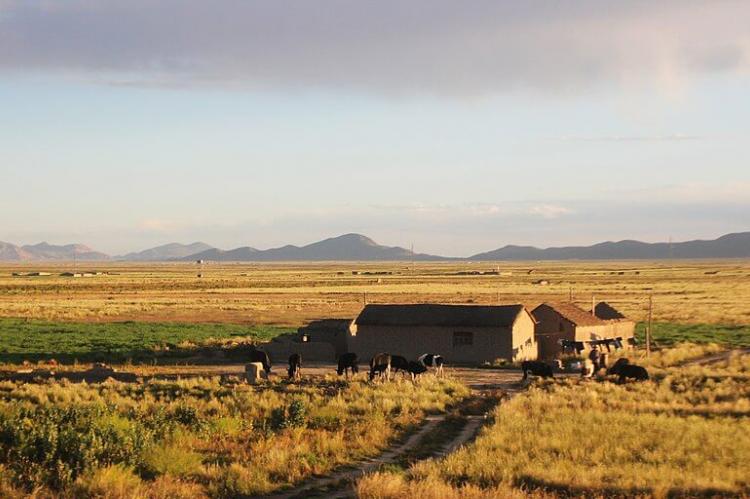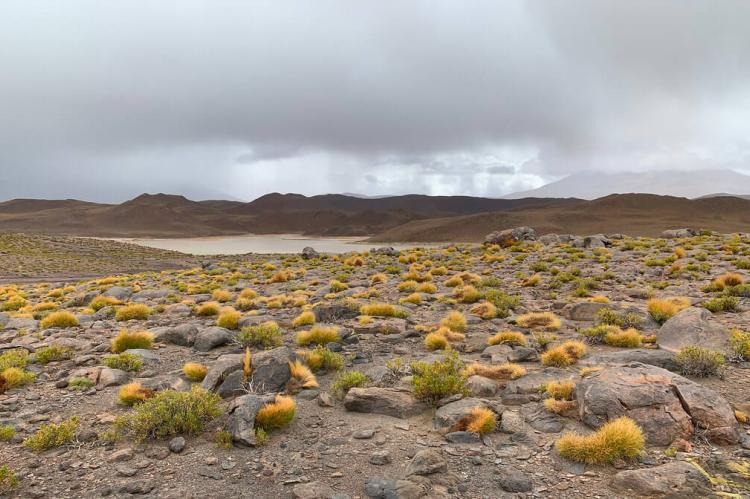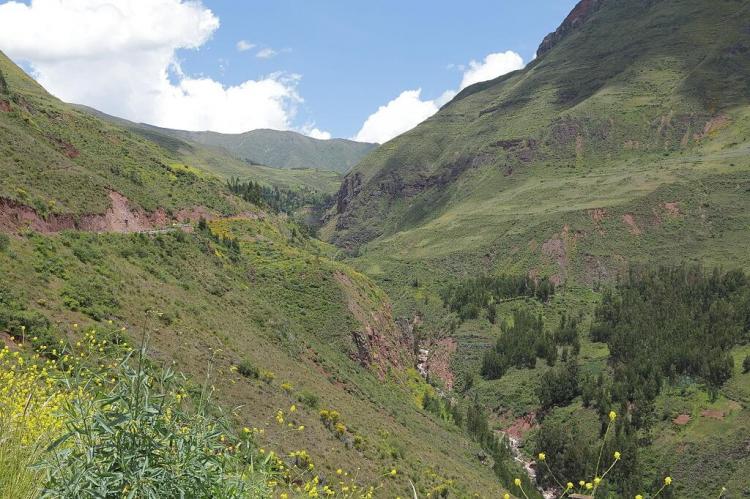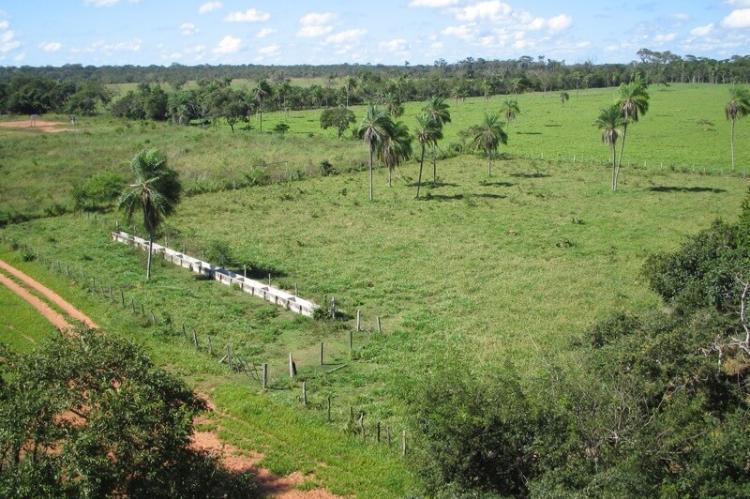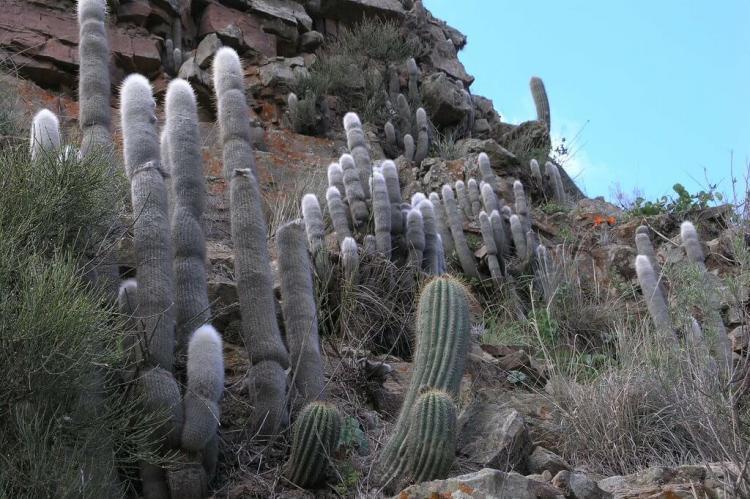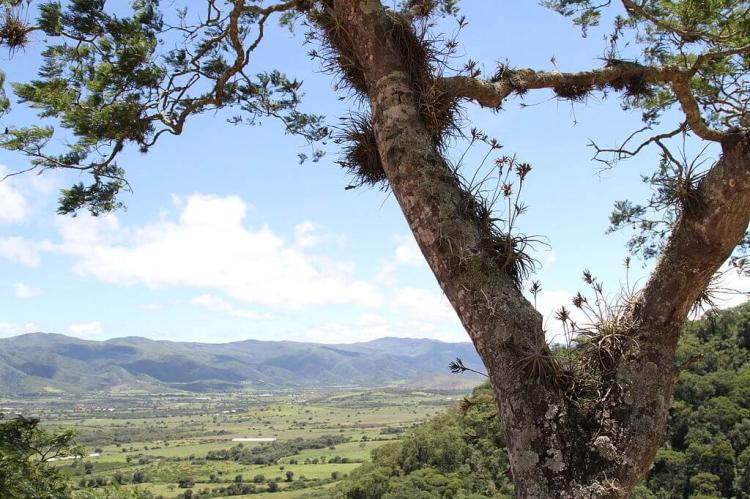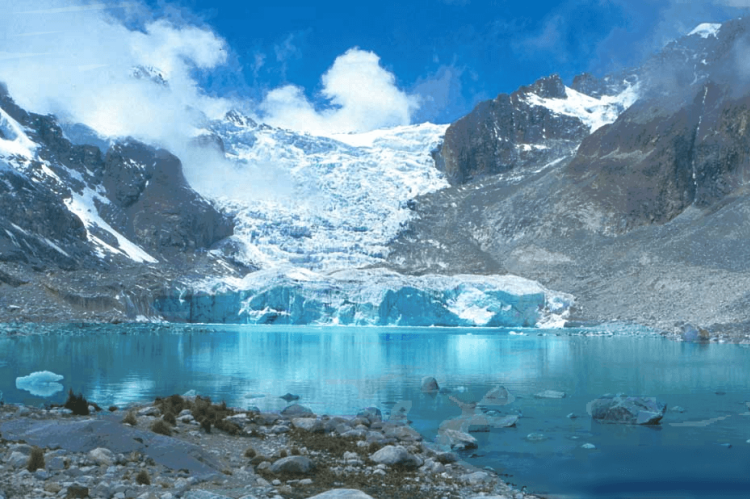Bolivia: Natural Landscape
Stretching in a broad arc across western Bolivia, the Andes define the country's geographic zones. The Western zone features the Andes and the Altiplano. The Central zone features the Semitropical Yungas, the Highland Valleys, and the Gran Chaco. The Eastern Zone features the Tropical Lowlands.
The Natural Landscape of Bolivia
Bolivia, positioned in the west-central part of South America, boasts an expansive territory spanning approximately 1,100,000 square kilometers (425,000 square miles). It is a landlocked nation, sharing borders with five countries: Brazil to the north and east, Paraguay to the southeast, Argentina to the south, Chile to the southwest, and Peru to the northwest.
The topography of Bolivia is characterized by the imposing Andes Mountains, which bisect the country from north to south. This mountainous landscape contributes to Bolivia's unique geography and influences its climate and biodiversity. Most of Bolivia's major urban centers are nestled within the Andean highlands, constituting one of the highest inhabited regions globally. The highlands play a pivotal role as an economic and political hub, shaping the nation's trajectory.
However, noteworthy transformations are occurring in Bolivia's eastern lowlands, marked by rapid population growth and economic development. These lowland regions are witnessing increased attention and activity, fostering a shift in the country's demographic and economic landscape. This dynamic interplay between the highlands and lowlands reflects Bolivia's diverse geographical and socio-economic tapestry.
Biodiversity
Bolivia is a biodiversity hotspot, boasting extensive flora and fauna. The Global Biodiversity Index recognizes Bolivia as the 18th most biodiverse country globally, underscoring its ecological richness. The country hosts an impressive biodiversity catalog, including 1,435 bird species, 259 amphibians, 407 fish species, 382 mammals, 315 reptile species, and 14,729 vascular plant species.
Conservation
Bolivia's conservation efforts extend beyond mere biodiversity protection; they encompass preserving unique ecosystems, cultural heritage, and striking landscapes, from the Amazon Rainforest to the Andes Mountains, wetlands, and high-altitude plateaus. As a result, conservation is paramount for Bolivia.
Conservation in Bolivia faces diverse challenges, including deforestation, illegal wildlife trafficking, habitat fragmentation, conflicts over land use, economic pressures, and the demand for natural resources. Overcoming these challenges requires a comprehensive and concerted approach.
Despite these challenges, Bolivia remains committed to sustainability. Robust legal frameworks, strategic collaborations with local communities and international organizations, sustainable practices, and stakeholder engagement demonstrate Bolivia's proactive stance in protecting its extraordinary natural heritage.
Climate
Bolivia has a diverse climate, with different regions experiencing different temperature and rainfall patterns. The country can be broadly divided into three climate zones: the Andean region and arid highlands of the west; the sub-Andean and semi-tropical valleys in the middle third of the country; and the tropical lowlands of the east.
A cold and dry climate characterizes the Andean region and arid highlands of the west. Average temperatures range from 5 - 15 °C (41 - 59 °F). Rainfall is low, with most areas receiving less than 500 mm (20 in) of rain annually. The rainy season runs from December to March.
The sub-Andean and semi-tropical valleys have a mild climate, with average temperatures ranging from 15 - 25 °C (59 - 77 °F). Rainfall is higher than in the Andean region, with most areas receiving 500 - 1,000 mm (20 - 40 in) of rain annually. The rainy season runs from November to March.
A hot and humid climate characterizes the tropical lowlands of the east. Average temperatures range from 25 - 30 °C (77 - 86 °F). Rainfall is very high, with most areas receiving over 2,000 mm (80 in) of rain annually. The rainy season runs from September to May.
Volcanism
Bolivia does not have active volcanoes within its borders. However, it has a volcanic history, with evidence of past volcanic activity and dormant and extinct volcanoes.
Bolivia has several dormant volcanoes, which are not currently erupting but have the potential to do so in the distant future. These dormant volcanoes are mainly located in the Andes mountain range, which runs through western Bolivia. Examples include Parinacota, Pomerape, and Licancabur.
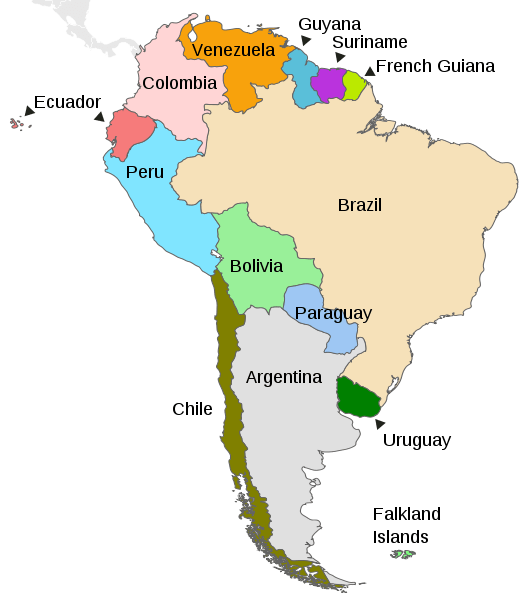
Map depicting the countries on the continent of South America
Natural Geography of Bolivia
Geographic Zones
Stretching in a broad arc across western Bolivia, the Andes define the country's three geographic zones:
-
Western Zone: features the Bolivian Andes and the Altiplano
-
Central Zone: features the Semi-tropical Yungas, the Highland Valleys, and the Gran Chaco
-
Eastern Zone: features the Tropical Lowlands
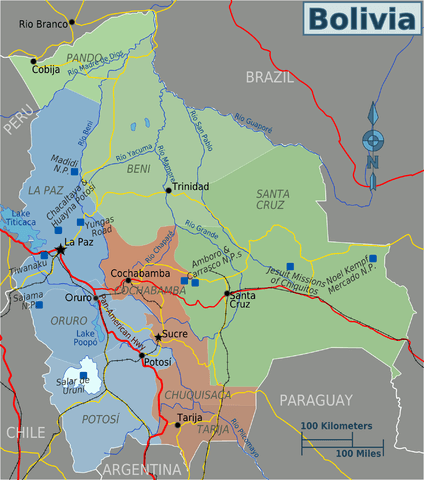
Map showing Bolivia's three geographic zones and their departments
Western Zone: Andes Mountains / Altiplano
The Bolivian Andes run in two main cordilleras. The Cordillera Occidental, or the western range, runs along the border with Chile. It is essentially a range of dormant volcanoes and features many isolated summits. While making up the country's western border, the range heads south and continues into Chile. The Altiplano lies to its west.
The Cordillera Oriental, or the eastern range, is a high, broad system of mountains stretching from Peru to Argentina. It is often identified as two separate ranges: the "Cordillera Real" north and the "Cordillera Central" south. Heading generally south and southeast, it forms the eastern edge of the Altiplano and continues into northern Argentina.
Between the two cordilleras lies the Altiplano plateau, approximately 800 - 900 km (500 - 560 mi) long and 130 - 200 km (80 - 125 mi) wide. The Altiplano plateau is made up of valleys and rolling hills. It includes salt flats, volcanoes, rivers, and lakes. Running between the two Andes branches, it heads south from above Lake Titicaca into northern Chile and Argentina.
The Altiplano hosts the famous Salar de Uyuni and other salt flats and lagoons. Its most prominent feature is Lake Titicaca in the north. Many volcanoes lie scattered among the plains and mesas. The climate in the Altiplano is generally cold and windy. The terrain is mainly treeless and contains sparse vegetation primarily made up of tough clumps of grass (Jarava ichu)), Thola bushes (Baccharis dracunculifolia), and occasional stands of quinoa plants and queñua bushes.
Central Zone: Yungas / Highland Valleys / Gran Chaco
The northeastern flank of the Cordillera Real is known as the Yungas. The Yungas contains the rugged, largely undeveloped, steep jungle-covered mountains that continue eastward until eventually meeting the tropical lowlands. The upper reaches of the Yungas consist of cloud forests. The climate is hot and experiences high precipitation. Rivers cascade through the region from the glaciated summits of the Andes and eventually empty into the upper Amazon Basin. Rich in flora and fauna, the area is crisscrossed by Inca trails.
The Highland Valleys region lies east and southeast of the Altiplano and has the most hospitable climate in the whole country. It comprises the central Cordillera's rolling hills, valleys, and basins. The soils are fertile, and the region mostly experiences a Mediterranean climate. It is the second most populous region of Bolivia and hosts the cities of Cochabamba, Sucre, Tarija, and Potosí.
The Gran Chaco region is located in the southeastern corner of the Santa Cruz department, bordering Argentina and Paraguay. It is characterized as a harsh, almost impenetrable, flat land of thick brush, cacti, grassy expanses, and some forested areas. The region is hot and dry; however, it is highly diverse in its flora and fauna.
Eastern Zone: Tropical Lowlands
The Tropical Lowlands region includes Bolivia north and east of the Andes. Although comprising over two-thirds of the national territory, the area is sparsely populated. Most of Bolivia's essential rivers are located here. Differences in topography and climate separate the lowlands into three areas: the flat and tropical northern area, the drier rolling hills of the central area, and the semi-arid southeastern area.
The flat northern area comprises the Beni and Pando departments and the northern part of the Cochabamba Department. It consists of tropical rainforests. However, because much of the topsoil is underlain by clay hardpan, drainage is poor, and heavy rainfall periodically converts vast parts of the region to swampland. Wide, slow-moving rivers drain the northern lowlands. The largest of these rivers, the Mamoré, Beni, and Madre de Dios, flow northward into the Madeira River in Brazil and eventually into the Amazon River.
The central area, comprising the northern half of the Santa Cruz Department, features gently rolling hills. It has a drier climate than the northern area. Forests alternate with savanna, and much of the land has been cleared for cultivation. Santa Cruz, the largest city in the lowlands, is located here. The region also contains most of Bolivia's petroleum and natural gas reserves.
The southeastern area of the lowlands is a continuation of the Paraguayan Chaco. Virtually rainless for nine months of the year, this area becomes a swamp during the three months of heavy rains. The extreme variation in rainfall supports only thorny scrub vegetation and cattle grazing.
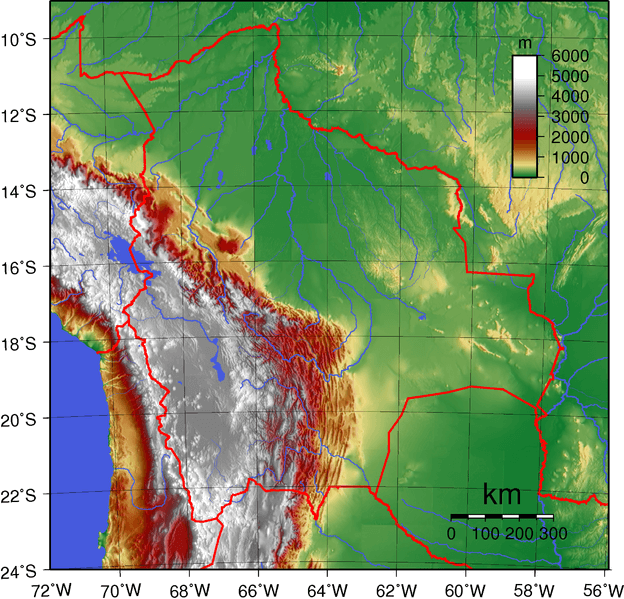
Topographical map of Bolivia: plains of Amazon Basin in green, Sub-Andean Zone in red, Eastern and Western Cordilleras in white, Altiplano in gray.
Mountain Ranges
Bolivia has a diverse and extensive array of mountain ranges, shaped predominantly by the Andes Mountains, which run through its western region. These ranges offer breathtaking landscapes, rich biodiversity, and cultural significance.
See more: Mountain Ranges of Bolivia
Islands and Archipelagos
Bolivia is a landlocked country in the heart of South America with no coastline along the sea or ocean. Therefore, Bolivia does not have any islands in the traditional sense. However, Bolivia has several islands in Lake Titicaca, located on the border between Bolivia and Peru. Lake Titicaca is the largest lake in South America and the highest navigable lake in the world. Here are some of the notable islands in Lake Titicaca that belong to Bolivia:
-
Isla del Sol (Island of the Sun): Perhaps the most famous island in Lake Titicaca, Isla del Sol is considered sacred in Inca mythology. It has historical ruins and terraces, including the "Pilcocaina" and "Yumani" staircases, remnants of ancient Inca and pre-Inca civilizations.
-
Isla de la Luna (Island of the Moon): Located near Isla del Sol, this island is also historically and culturally significant. It features ruins and temples dedicated to the Moon goddess by the Incas.
-
Isla Pariti: This island is known for its relatively small size and is located near the eastern shore of Lake Titicaca.
-
Isla Kalahuta: Positioned near the southern part of Lake Titicaca, this island is known for its reed boat construction and traditional way of life.
-
Isla Suriqui: Located near the southeastern shore of Lake Titicaca, this island is known for its picturesque landscapes and tranquility.
Bodies of Water
Bolivia is a landlocked country in South America, which means it lacks direct access to the ocean. However, it is home to several notable water bodies. While Bolivia's water bodies may not have coastal landscapes, they still play a vital role in the country's geography, ecology, and cultural heritage.
The country features the iconic Lake Titicaca, the highest navigable lake in the world, shared with Peru. Lake Poopó, located in the Altiplano region, is another significant lake, although its size and water levels have fluctuated recently. Bolivia also has various rivers, including the Beni, Mamoré, and Paraguay rivers, which provide essential transportation routes and support diverse ecosystems.
See more: Water Bodies of Bolivia
Administrative Divisions
Departments are Bolivia's primary political subdivisions. There are nine departments, each represented in the Senate by four Senators.
See more: Cultural Landscape of Bolivia
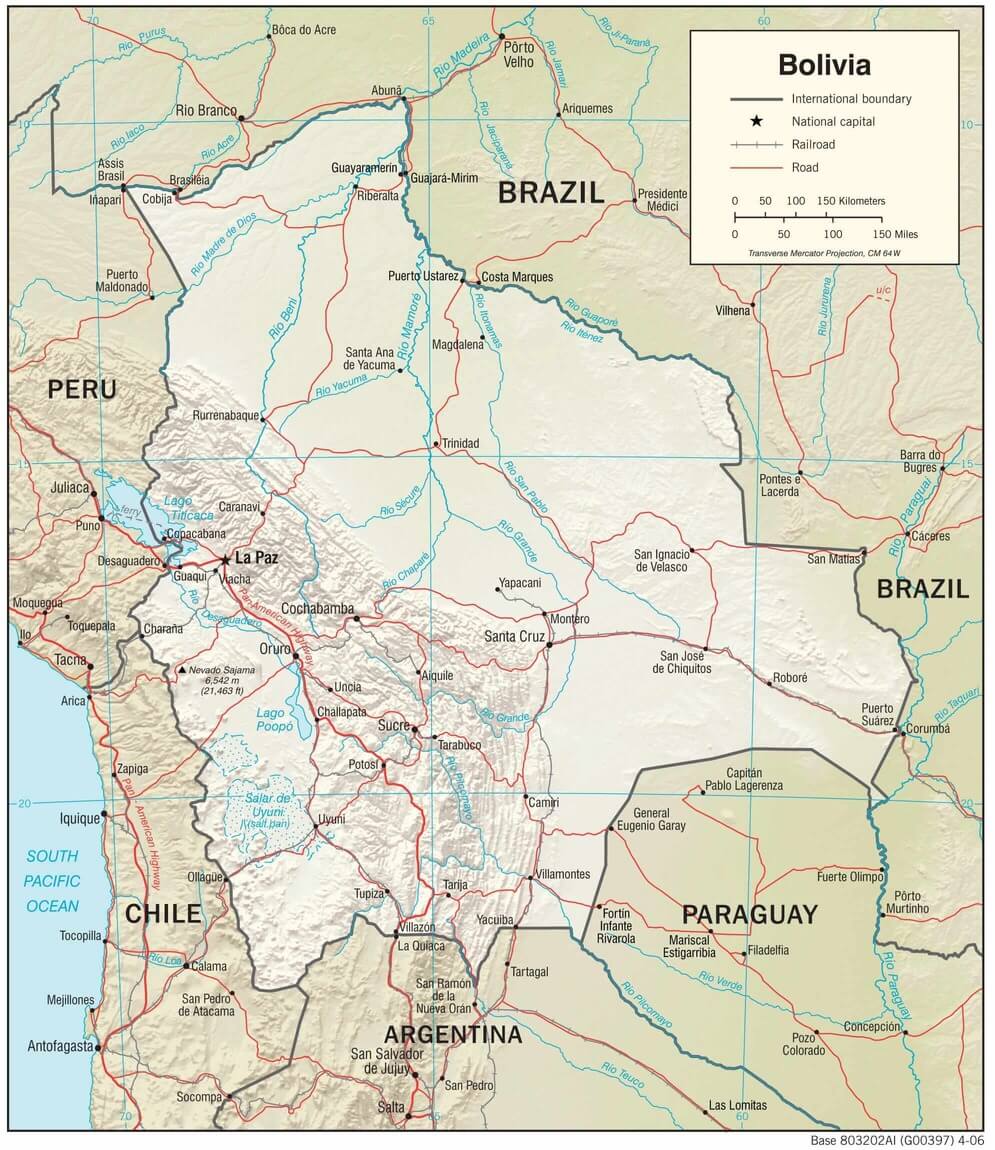
Bolivia physiographic map
Ecological Regions
The following is a list of terrestrial ecoregions in Bolivia, as defined by the World Wide Fund for Nature (WWF).
Bolivia is in the Neotropical realm. Ecoregions are classified by biome type - the major global plant communities determined by rainfall and climate.
Tropical and subtropical moist broadleaf forests
-
Madeira-Tapajós moist forests
Tropical and subtropical dry broadleaf forests
-
Chiquitano dry forests
Tropical and subtropical grasslands, savannas, and shrublands
Flooded grasslands and savannas
Montane grasslands and shrublands
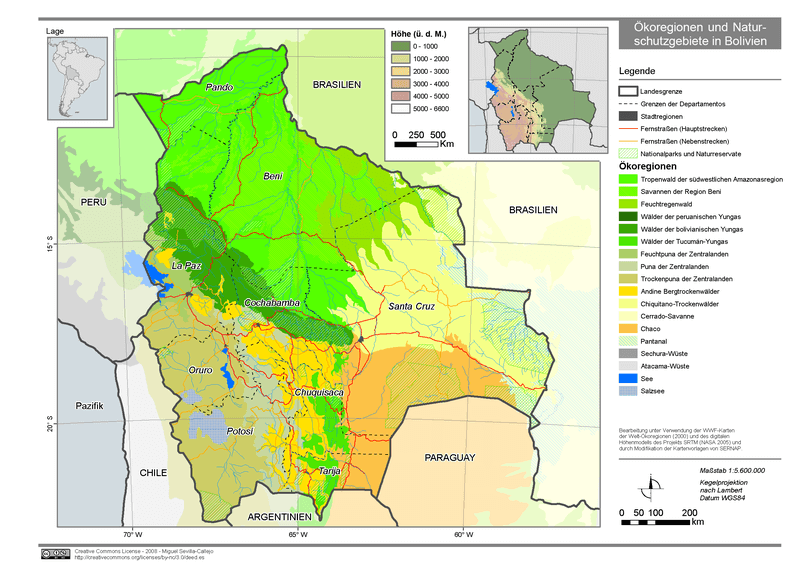
Map of Bolivia's ecoregions
